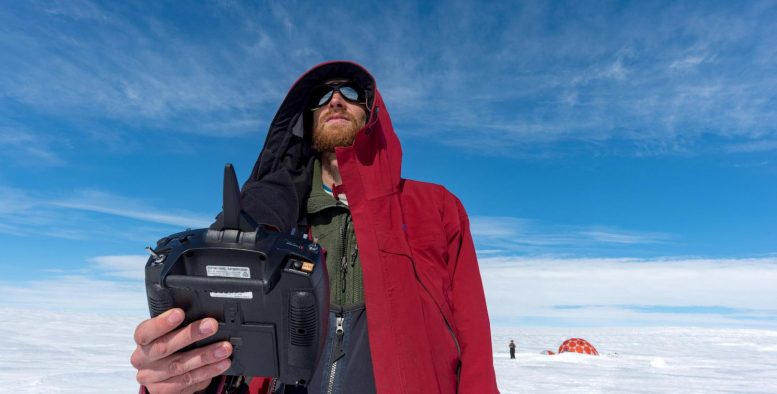
University of Arkansas geosciences associate professor Matt Covington flies a drone on the Greenland ice sheet. Credit: Jason Gulley
Researchers climbed into moulins, which drain meltwater from the ice sheet, to better understand how volume relates to ice movement.
Holes that carry surface meltwater to the base of the Greenland ice sheet, called moulins, are much larger than previously thought, according to a new study based on observation and first-hand exploration by a team including a geologist from the University of Arkansas.
The extra volume could influence the stability of the Greenland ice sheet and how quickly it slides toward the sea.
The team studied the relationship between the size of the moulins and the daily variation of water depth in them during the summer melt season. Scientists believe increased water depth, and therefore pressure, inside moulins lubricates the base of the ice sheet and increases the speed of its movement toward the sea, the way an ice cube slides easily on a thin film of water. But until now, little was known about the actual size of moulins and how much water they can hold.
“We compared our models with in-the-field observations of the water levels and it seemed like we would need really huge volumes inside moulins to produce the relatively smaller water variations that we were seeing,” said Matt Covington, associate professor of geosciences and first author of the study published in the journal Geophysical Research Letters. “Then when we went back in the following year and explored a moulin, it was giant. It was a case where the model made the prediction, and we went out in the field and it turned out to be right.”
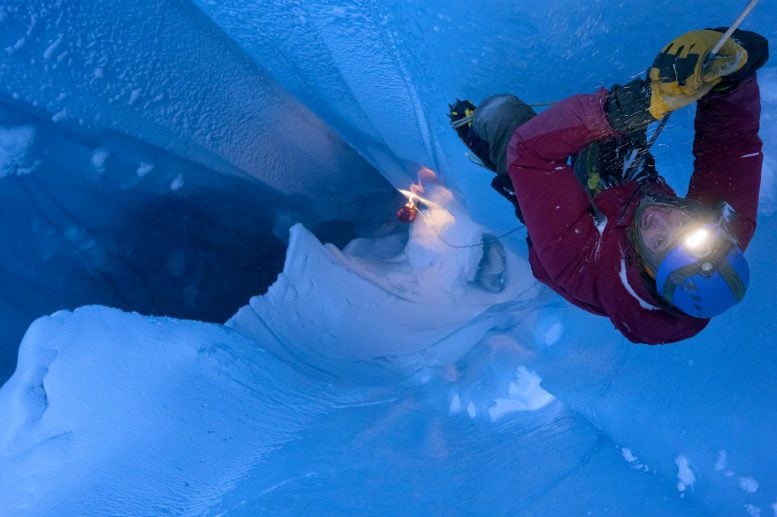
University of Arkansas associate professor of geosciences Matt Covington climbs into a moulin on the Greenland ice sheet. Credit: Jason Gulley
The team made two trips to the Greenland ice sheet in October 2018 and October 2019. During each trip, they used ropes and other climbing equipment to rappel 100 meters into two separate moulins, almost reaching the water level.
“It’s intimidating,” said Covington, an experienced cave explorer. “You back over the edge and you just see blueish ice going down as far as you can see, and then it’s blackness and there also are occasional sounds of crashing ice, which is pretty unnerving.”
Scientists have long observed that Greenland’s ice sheet moves and theorized that warmer summer melt seasons due to climate change could speed up that movement. But researchers have little data to help them understand the interaction between meltwater and the base of the ice sheet. The team’s findings add to the knowledge of how water interacts with the base of the ice sheet.
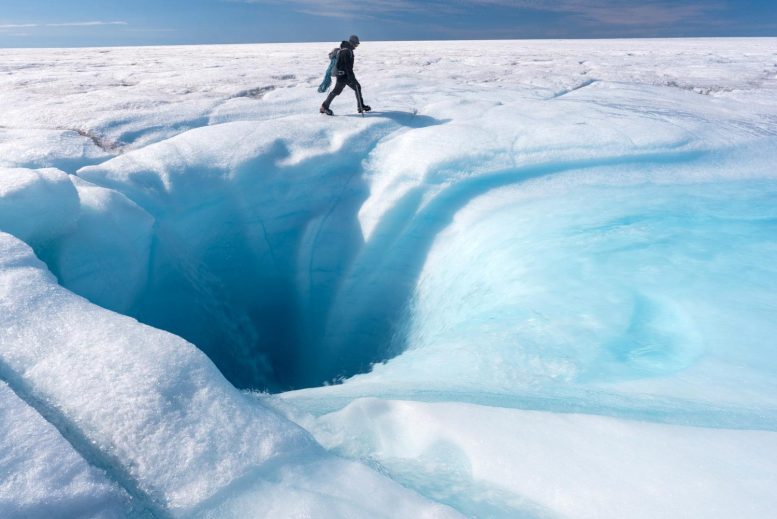
University of Arkansas associate professor of geosciences Matt Covington investigates a moulin on the Greenland ice sheet. Credit: Jason Gulley
“We’re trying to understand the way the meltwater is interacting with the ice motion, and the main thing that we found is that the water pressure within these moulins is not as variable as was previously observed, and that this seems to result from really large volumes in the moulins,” Covington said.
Reference: “Moulin Volumes Regulate Subglacial Water Pressure on the Greenland Ice Sheet” by M. D. Covington, J. D. Gulley, C. Trunz, J. Mejia and W. Gadd, 9 October 2020, Geophysical Research Letters.
DOI: 10.1029/2020GL088901

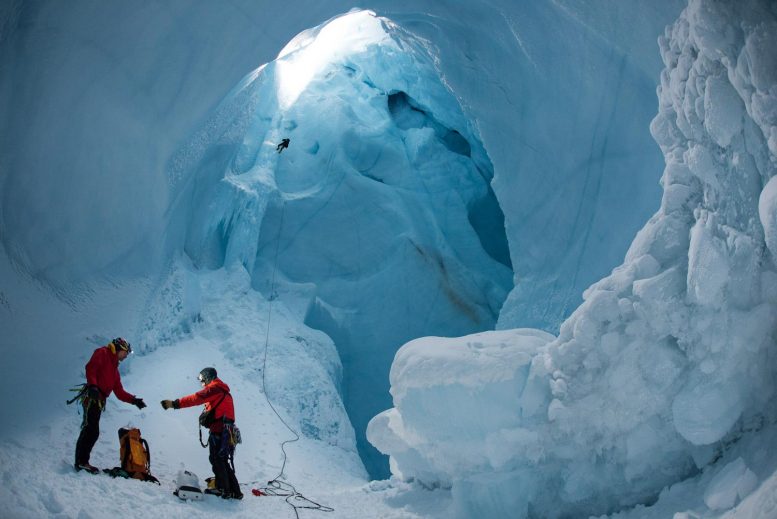
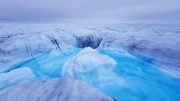

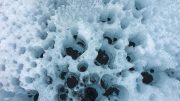
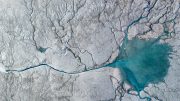
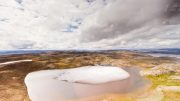
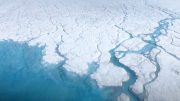
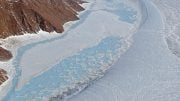
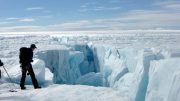
Was warmer 8,000 years ago. Greenland Ice still survived.
…put up solar panels in orbit!?. Blocking the solar rays, and providing electricity…putting a BIG shadow on OUR poles, sounds kinda simple?
The planet; hasn’t been this warm.
Can technology, science save what
underway? Unfortunately, I don’t
believe so. But, God only knows.
Respectfully yours,
Richard M France
Independent Researcher
Reflection’s 🍁
It is more likely that most of the meltwater runs through cracks in the upper, brittle region of the ice sheet. Ice starts to act in a plastic manner below about 50m. If warm water makes it that deep, it can probably melt additional ice beyond an original crack depth. However, the water is unlikely to make its way to the bottom of very thick ice because of the tendency of the ice to close cavities because of plastic flow.
Water is observed to flow out the base of glaciers, but that is in the zone of ablation where the ice has thinned out. Ice can be liquefied by high pressure, such as at the base of a very thick ice sheet. Geothermal heat, particularly hot springs, can provide melting at the base of ice that is thicker than the transition to plastic behavior. There are a lot of variables involved in the behavior of ice sheets, such as the slope and roughness of the basal topography. Those all have to be taken into account.
I have personal experience with meltwater flowing well above the base of the ice sheet in the Greenland ice sheet near Thule Air Base. It wasn’t evident where the water was exiting, but it was probably farther downslope where the ice was thinner.
It is not in Greenland alone.It is taking place there globally. The D day is so close.
greenland ice sheet might end up being more like swiss cheese and breakup much more quickly…